From creating natural dyes with onion peels to using leftover fabric to make totes, two new city-based fashion labels are taking the organic, eco-friendly route to style
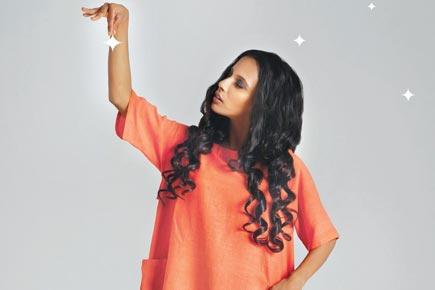
Flow with natural dyes
Handmade clothes have always held a special place in city-based advertising professional, Meenu K Tiwari's heart. "Throughout my childhood, my mother would make most of the clothes I wore.
ADVERTISEMENT
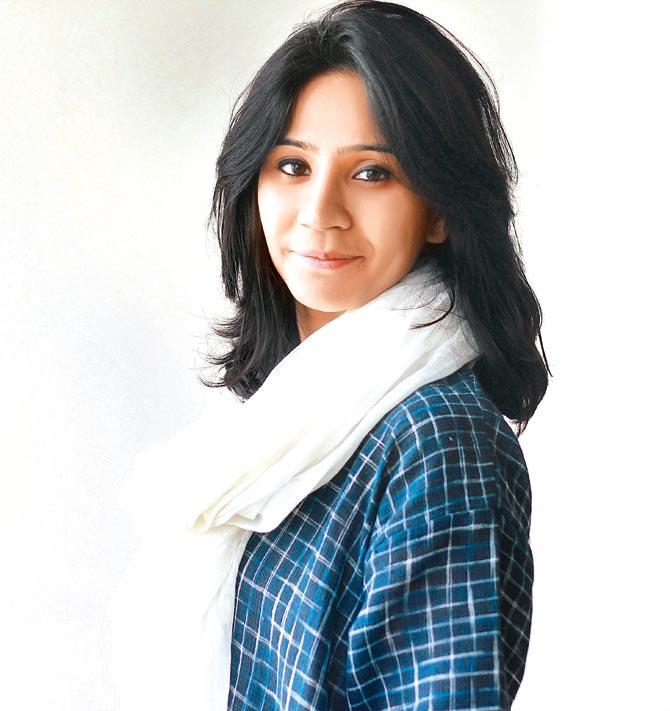
Meenu K Tiwari
It is surprising how one picks up these things instinctively as a child," says the 33-year-old, who has incorporated the concept in her six-month-old fashion brand, The Plavate (pronounced as Pla-vaa-tey; Sanskrit: flow).
From raw and Eri silk tops to linen skirts and pure cotton checkered dresses, the minimalist design pieces in the collection have been handwoven by traditional weavers from Assam, Bengal and Madhya Pradesh, largely women artisans.
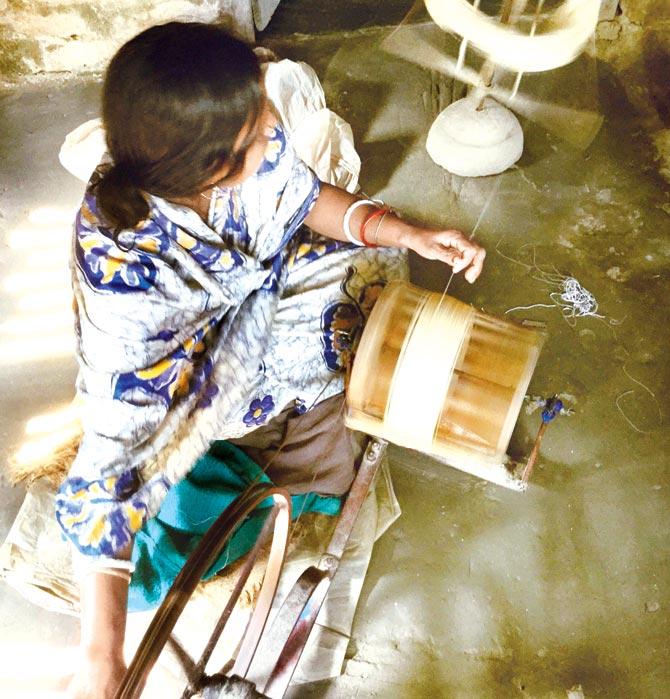
An artisan spins Eri silk yarn to make handwoven clothes for The Plavate
"Since I've grown up wearing my father and elder brother's clothes, I was keen to design apparel which is comfortable and airy, made using natural fabrics.
So, I would visit Mumbai's cloth markets and sit with the traders to learn more about cloth, thread count, count construction and natural dyes," says Tiwari, who comes with a decade-long advertising experience and is currently, working with the city-based Mullen Lowe Lintas.
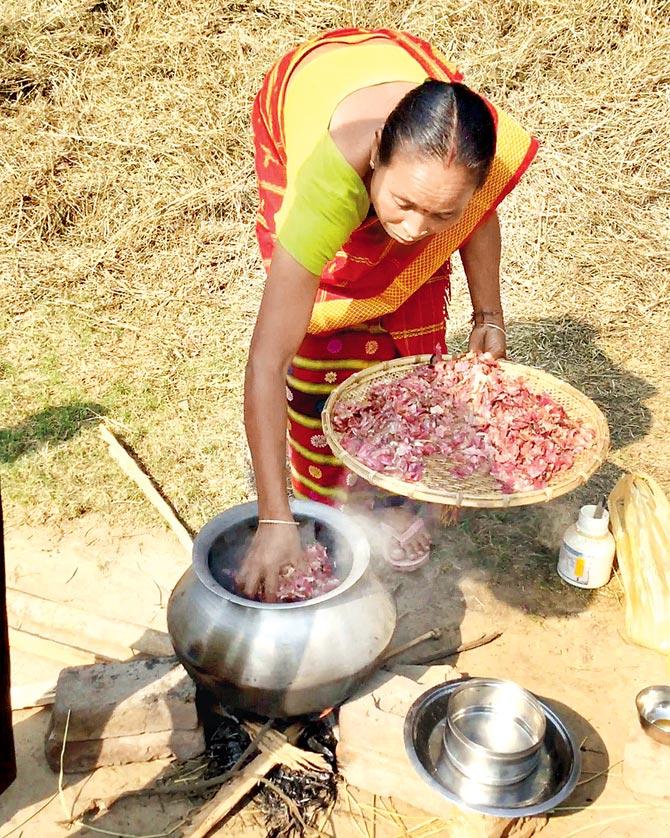 A village artisan boils onion peels to obtain a green coloured natural dye
A village artisan boils onion peels to obtain a green coloured natural dye
She also met traders and NGOs from Kolkata, Coimbatore, Assam and MP to source the right kind of fabric for the designs.
"Then, I started making my own fabric with the help of artisans from these areas. Not being from the fashion industry, I had to learn from scratch. It took me almost a year and a half along with the advertising job and finally, I launched The Plavate last November," she adds.
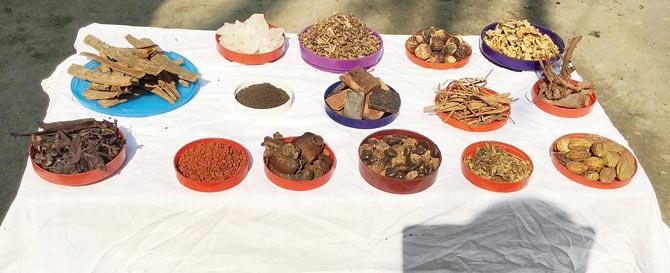
Ingredients like dried tea leaves, cinnamon sticks and annatto seeds are used to make natural dyes
It's natural
From cow dung to tea leaves, onion peels, turmeric and other fruits and vegetables, Tiwari obtains colour dyes from various natural ingredients for the collections. To derive a natural dye, the colouring agent needs to be boiled and strained.
The coloured water is then mixed with the yarn and boiled together. She cites an example, "We mix a part of cowdung with water, strain it and then boil the cowdung water and yarn together, till it starts throwing out gas (gobar gas).
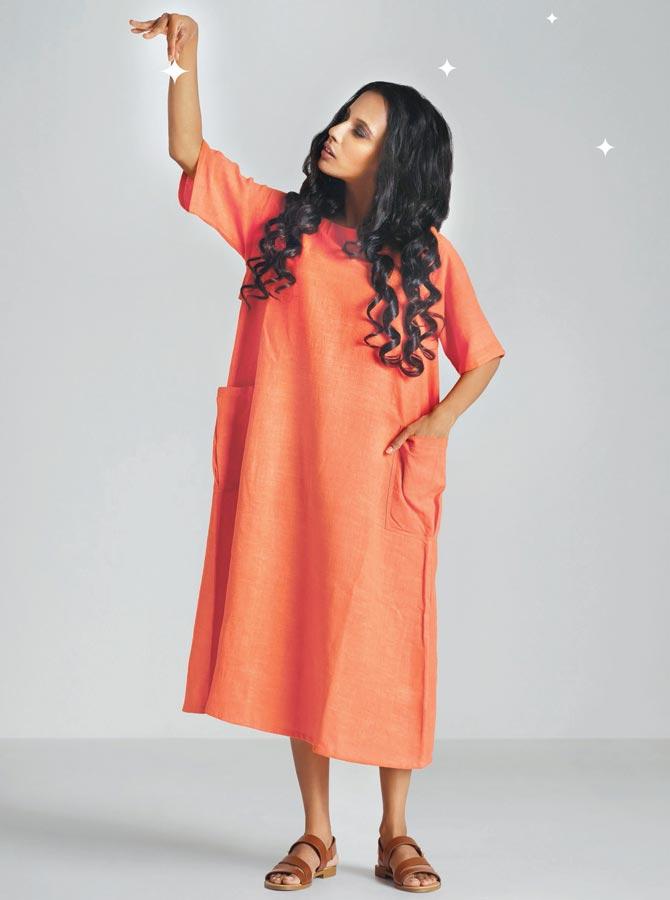
An outfit from the collection
We can use triphala powder, indigo and other dyeing agents and mix them with other natural colours to get a completely new colour. Also, some flowers and fruits are seasonal, so we have to finish the dyeing process during that period."
For Tiwari, designing is nothing short of being in a chemistry lab, experimenting with a variety of ingredients to obtain desired results. "Lac gives you reddish hues, cowdung gives a soft, green colour, katha gives brown, indigo gives blue. But when I mixed lac and indigo, I got a beautiful, bluish purple," she recounts.
While the entire process — from spinning the yarn to dyeing it, weaving the fabric, grading, pattern cutting and finally, stitching the clothes — takes at least two months, Tiwari feels it is worth it. "The aim is to keep every step organic.
The cost of production increases but it is a small price to pay. The damage done to the environment by use of chemicals in clothing is not even measurable in pure accounting terms. In the rush to achieve more in less time, we have managed to kill the cycles of nature. Our aim is to work with them, not against them," she signs off.
Log on to www.theplavate.in
Cost Rs 1,500 (sheer shrug), Rs 3,000 (checkered cotton dress)
Waste not, want not
If you step into Bhumika & Jyoti, a designer store launched last month on the bustling Juhu Tara Road, you may spot a clutch, whose laces resemble the embellishments in a lehenga, a green dress that looks similar to a pair of platform heels or pretty butterfly motifs perched on both, an umbrella and a tote.
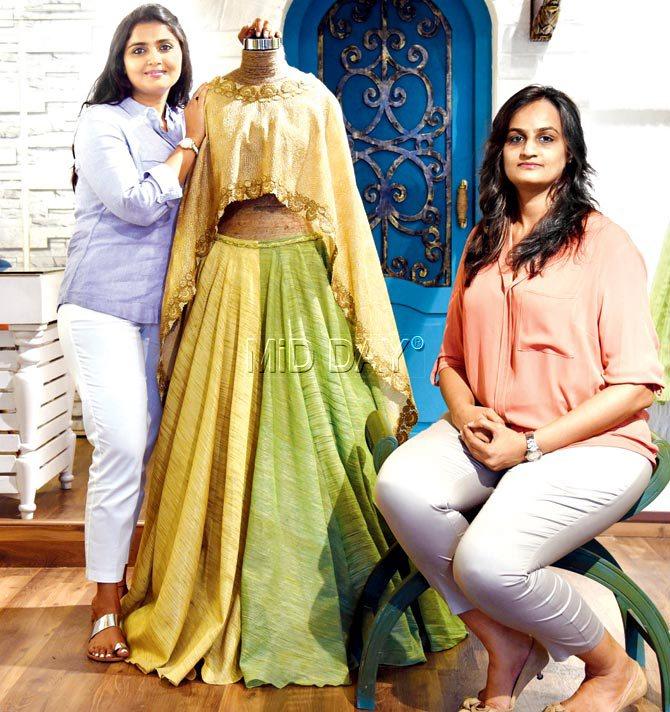
(From left) Jyoti Mukerji and Bhumika Chheda at the zero-waste concept store, Bhumika & Jyoti. Pics/Nimesh Dave
Touted as India's first zero waste concept store, it's been launched by city-based entrepreneur Bhumika Chheda and her childhood friend, TV actor and designer Jyoti Mukerji (who's incidentally Rani Mukerji's sister-in-law).
"Hailing from the garment export business, Bhumika would see a lot of fabric side cuts going to waste and unconsciously, we, too, were responsible for exploiting the city in a way.

A clutch created from leftover embellishments
We all know how the Deonar fire happened. So, the idea was to create a platform for high fashion, and yet be socially responsible by not creating any garbage," asserts 39-year-old Mukerji.
What's in the store?
While the store stocks women's bridal, couture and prêt collections, the fabric cuts are also used to make various accessories like footwear, hand clutches, scarves, jewellery, pouches and umbrellas. Sometimes, they're also used as embellishments in the same garment.
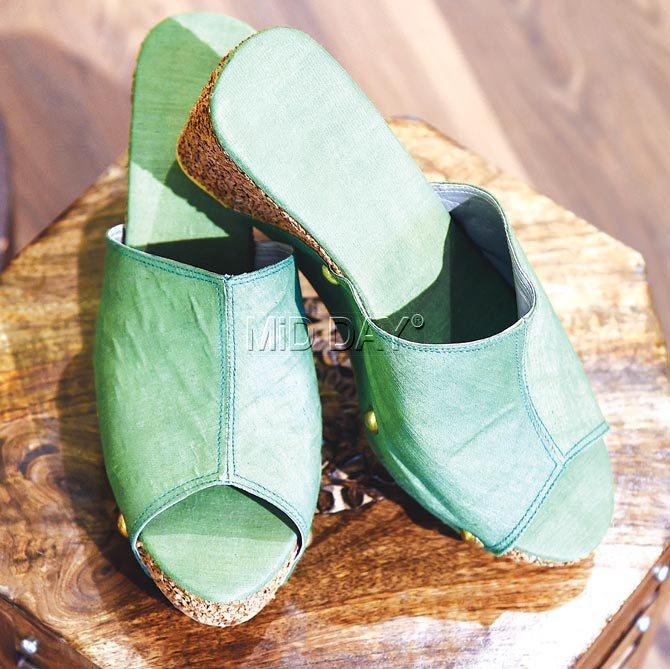 A pair of platform heels made from leftover fabric
A pair of platform heels made from leftover fabric
"The leftover fabric of any garment is approx 15 to 20 per cent in various cuts and forms, so technically, it's impossible to use it to make another garment but it can be re-used in other ways.
For instance, we've even made our business cards from the leftover fabrics, and also used them to make buttons, rather than opting for plastic or fibre ones," explains Chheda, adding that the label's factory unit is located in Goregaon, employing more than 100 underprivileged locals from the vicinity.

The butterfly motif from one of the garments used on an umbrella
Time 11 am to 8.30 pm
At Bhumika & Jyoti, Shop no 4, Fiona Building, near Maneckji Cooper School, Juhu Tara Road.
Cost Rs 5,000 onwards
Call 65522666
 Subscribe today by clicking the link and stay updated with the latest news!" Click here!
Subscribe today by clicking the link and stay updated with the latest news!" Click here!






